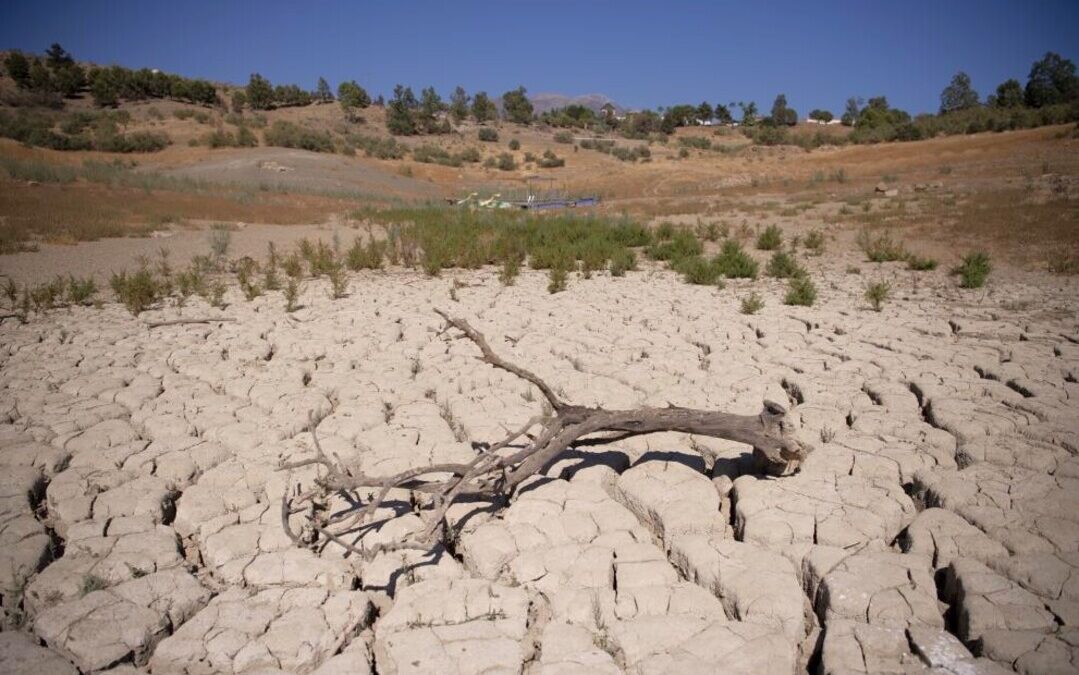EU Report Warns of Worsening Water Crisis as Pollution and Droughts Rise
EU report warns of worsening water crisis as climate change, pollution and mismanagement threaten Europe’s freshwater resources.
The combined threats of climate change, pollution and unsustainable water use are pushing Europe’s freshwater resources to the brink, revealed a European Commission report released on Tuesday.
The report, which assessed the implementation of the EU’s Water Framework Directive and Floods Directive, highlighted the increasing frequency of droughts, rising pollution levels, and the failure of many Member States to meet their water protection targets.
A Continent Under Water Stress
Water is essential for life, yet the report found that Europe’s water resources remain under severe pressure. Climate change has intensified extreme weather events, with prolonged droughts in the Mediterranean — particularly in Italy, Spain and Greece — followed by devastating floods in Central and Eastern Europe.
The Commission’s assessment of river basin management plans revealed that only 39.5 percent of Europe’s surface water bodies are in good ecological status, with many showing signs of severe degradation.
Chemical pollution, largely from industrial activities, agriculture and urban runoff, continues to be a major problem. Groundwater, though comparatively better protected, also faces increasing contamination from nitrates and pesticides.
Silent Polluters
Diffuse pollution from agriculture remains one of the most persistent challenges. The overuse of fertilizers and pesticides has led to high levels of nitrogen and phosphorous contamination in rivers, lakes and coastal waters, fueling dangerous algal blooms that deplete oxygen and threaten aquatic life.
“This stagnation can be explained by the fact that there is limited progress in most Member States in developing quantitative gap assessments as a basis to determine how to reduce the load of nutrients and pesticides,” said the report.
The study added: “The Commission made this recommendation during the previous cycle, but few Member States have presented the nutrient load reductions and even fewer Member States have reported having carried out assessments of the effectiveness of the measures taken so far.”
The report also highlighted industrial pollution, with heavy metals, pharmaceutical residues and microplastics posing significant risks to water quality. Mercury and other persistent toxic substances remain widespread, despite EU bans.
Among the biggest challenges is the lack of integration between water management policies and other sectors such as agriculture, energy, and urban planning. While progress has been made in wastewater treatment, stormwater management and pollution reduction, enforcement remains inconsistent across the EU.
The Race Against Time
With the 2027 deadline for achieving good status for all EU waters fast approaching, the report underscores the urgent need for stronger action. In response, the European Commission has announced a new European Water Resilience Strategy, aimed at strengthening water security and enhancing the continent’s ability to cope with climate-related water risks.
Key initiatives include:
- Stricter pollution controls: Strengthening regulations on industrial emissions and agricultural runoff.
- Nature-based solutions: Restoring rivers, wetlands and floodplains to improve water retention and quality.
- Improved monitoring and data collection: Expanding digital water reporting systems to ensure better enforcement.
- Investment in water-efficient technologies: Encouraging sustainable irrigation methods and industrial water reuse.
A Bleak Outlook Without Swift Action
Experts warn that without decisive intervention, Europe risks a future of severe water shortages, ecosystem collapse and increased conflicts over water use. The report called for Member States to accelerate their efforts, allocate more funding to water management and implement bold reforms to protect this vital resource.
“The window for action is closing,” the report concluded. “Ensuring a sustainable water future for Europe requires immediate, coordinated efforts at all levels of governance.”
As the EU moves toward adopting stronger measures, the challenge remains in translating policy into concrete action. With climate change intensifying water-related risks, the time to act is now.
Also Read:
Over 47,000 People Died in Europe Last Year Due to Heat, Study Estimates
Nirmal Menon
Related posts
Subscribe
Error: Contact form not found.


